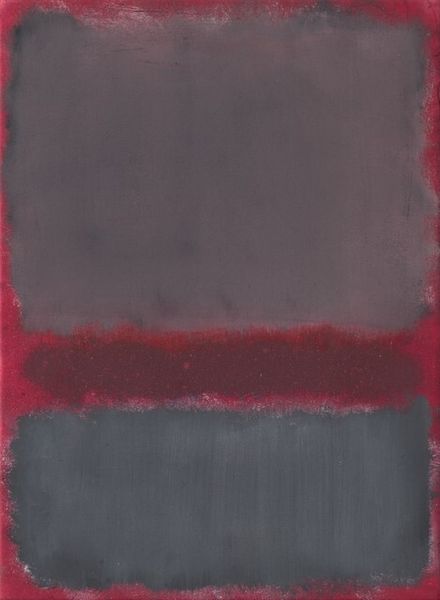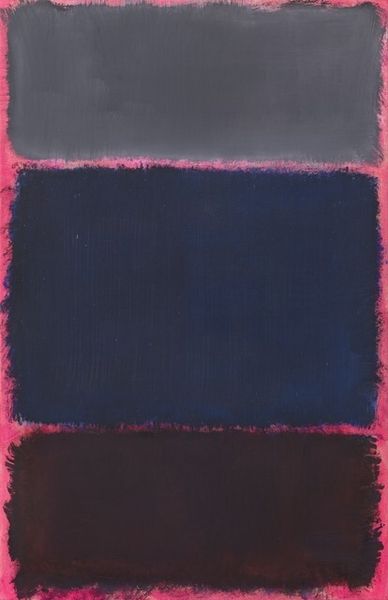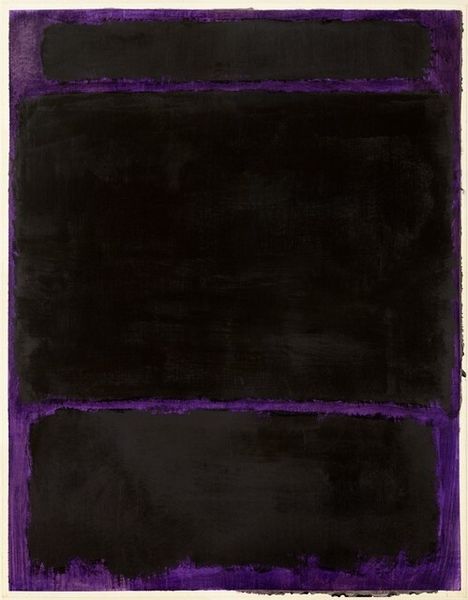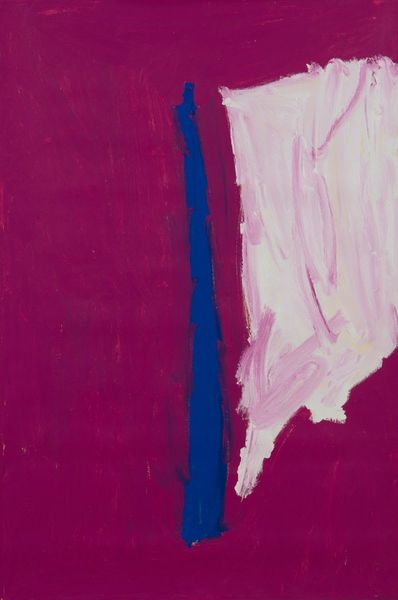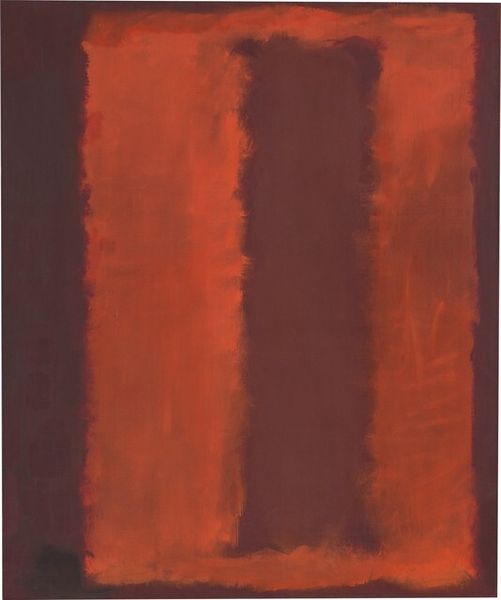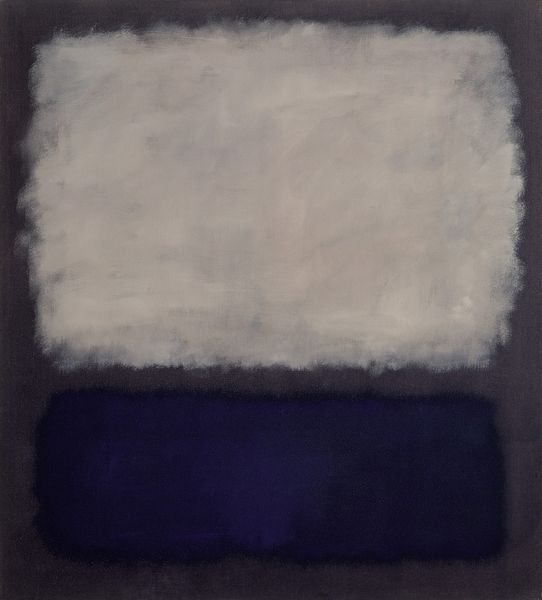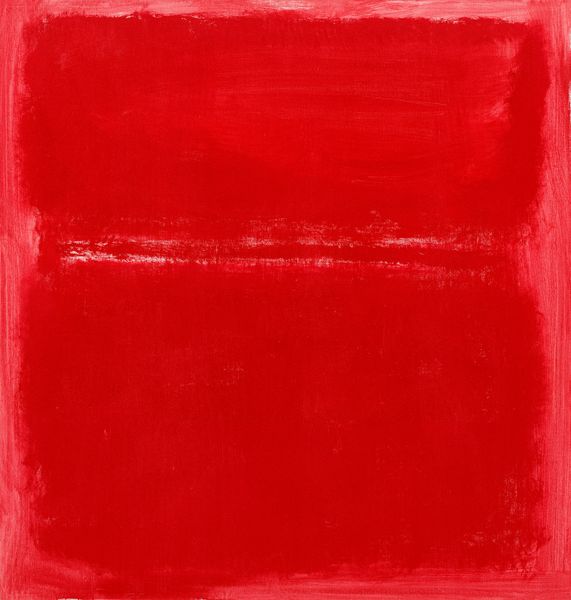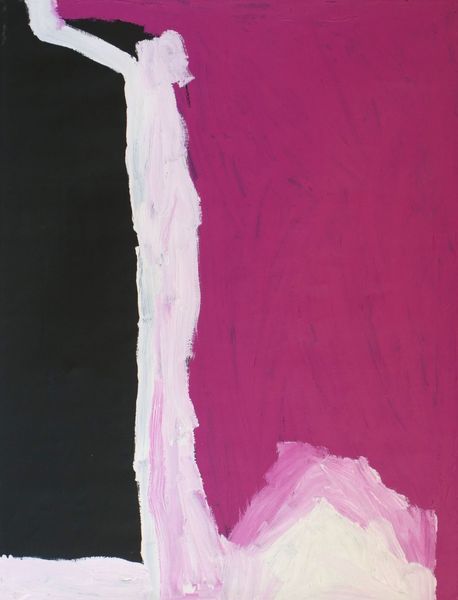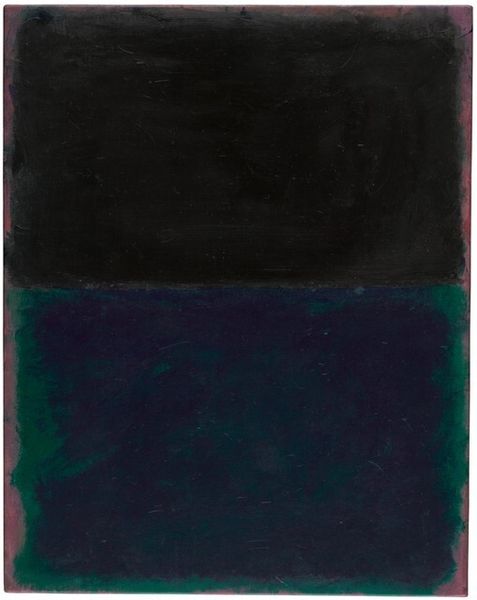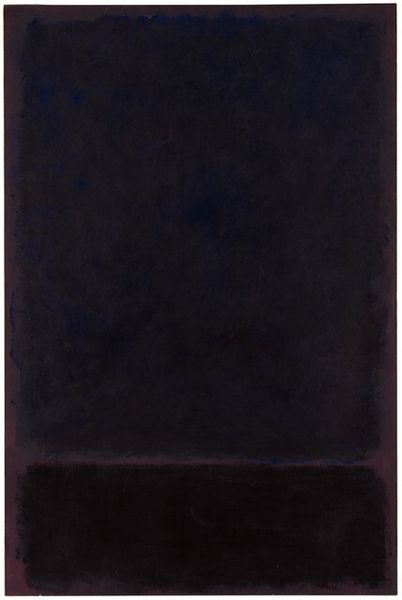
matter-painting, painting, oil-paint
#
abstract-expressionism
#
abstract expressionism
#
matter-painting
#
non-objective-art
#
painting
#
oil-paint
#
colour-field-painting
#
abstraction
#
modernism
Copyright: Mark Rothko,Fair Use
Curator: This is an untitled painting by Mark Rothko, created in 1968 using oil paint. What's your initial reaction? Editor: It’s brooding, isn't it? Dark plum hues, looming forms… there’s a weighty seriousness here. Curator: Yes, those dark purples are interesting considering the prevailing tastes of the art market, or, at least, what galleries were keen to promote at the time. You often saw Rothko in a bright mood and these are his colours, yet with all his trademark emotional tension Editor: Exactly! The forms, although simple rectangles, have this hazy, almost dissolving quality. It keeps the eye moving, searching for definition that never quite arrives. Like peering into a fog, expecting to see something emerge. Curator: Rothko’s intention, in part, was to provoke an intense emotional reaction. This painting resides within his ‘black-form’ period – and I read a very moving interpretation that the darkness signified his own looming presence and a desire to make paintings which communicated this more literally Editor: I can definitely see that. It moves away from the decorative, even though those deep shades are, undeniably, visually compelling. Did Rothko find acceptance amongst critics with his bolder works? I am just wondering how radical this particular direction would be Curator: Critical response was often divisive and some art market figures saw what he was doing and either felt jealous of his emotional authenticity, or considered him, dare I say, ‘indulgent’. The late ‘60s saw new and daring explorations, yet Rothko's pieces remained as objects that demanded some kind of attention. What could they *mean* when society and institutions were being challenged in that moment. That being said, the late '60s really were an era in themselves, where social structures were being broken down, leading figures were being targeted. It seems there was something about these pieces that made him an 'artist of his time' in some critics minds. Editor: What strikes me is how relevant a painting like this remains. We still seek meaning, still grapple with existential questions. Artworks can reflect us and provide historical signifiers, and pieces like this force us to ask what is *beyond* us. This invites conversation that perhaps was being sidelined within galleries at the time and this Rothko demands more from us than our shallow analysis. It challenges our way of seeing! Curator: Absolutely! It serves as a powerful reminder of art's capacity to stir emotions and thought beyond mere visual stimulation, making us think about where we belong now, as much as where we did then. Editor: A compelling reflection – both aesthetically and culturally.
Comments
No comments
Be the first to comment and join the conversation on the ultimate creative platform.
